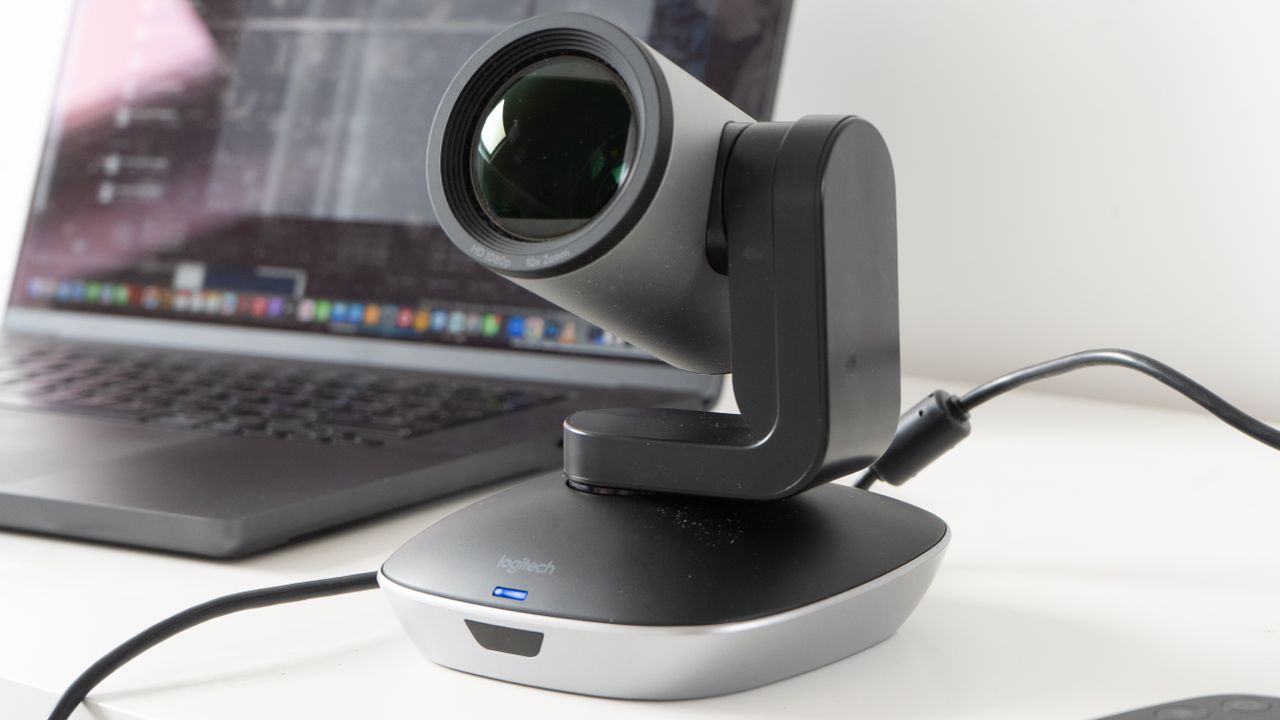
PTZ cameras have different jobs, and Logitech's brand is oft associated with conferencing or education. This camera is like any other in that regard, and can play well with the company's software, providing the capability to direct at a subject and close in with a powerful 10x optical zoom.
That's you're lot though – there is no built-in microphone, so don't expect a single device to complete your whole setup. This is more of a premium option to, say, provide close-ups to intermix with other video feeds of a classroom or church.
The camera itself isn't able to auto-track subjects, but it can partner with Logitech's software, which does have some capabilities there.
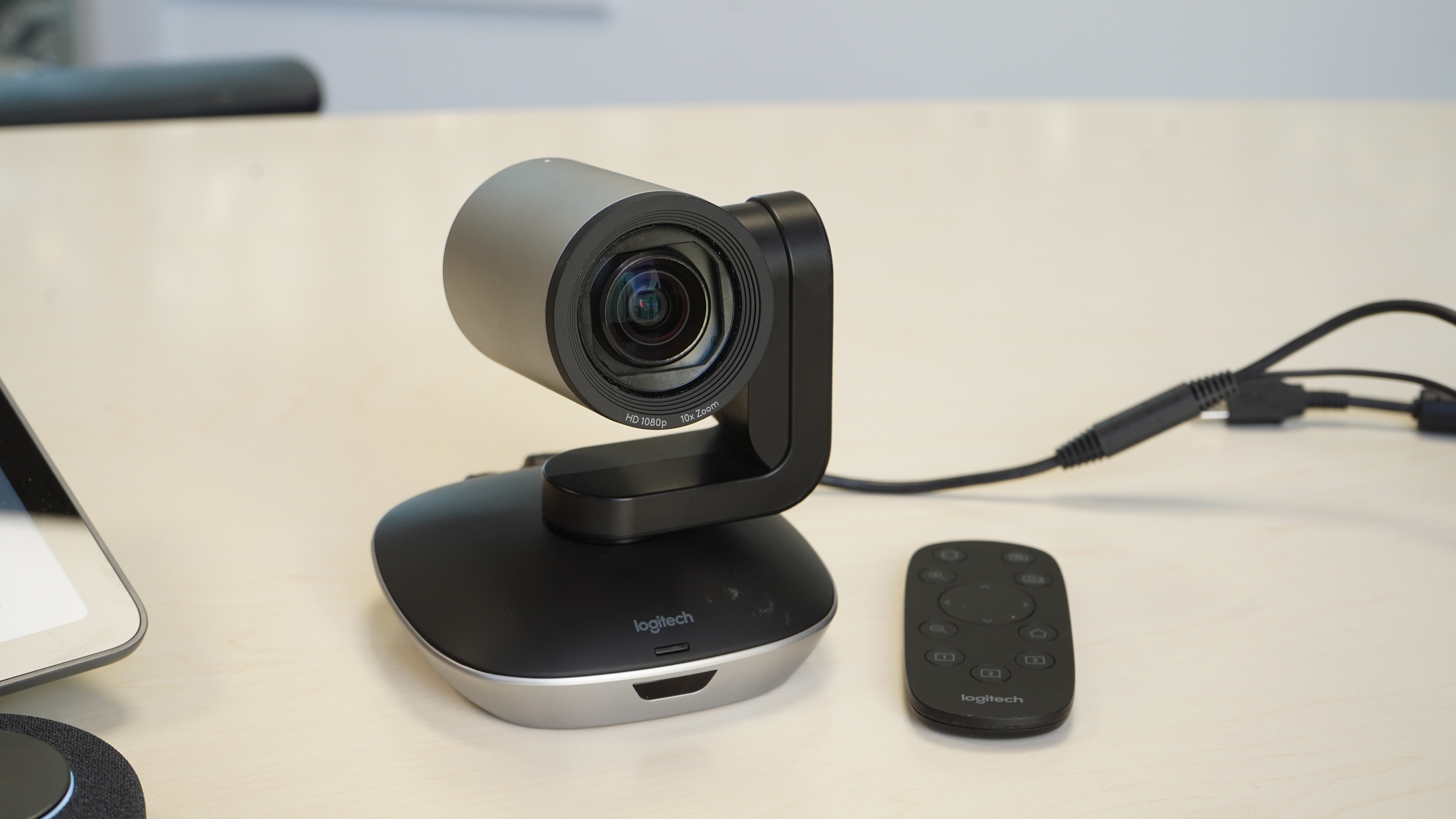
Logitech PTZ Pro 2: Price
With a likely retail price of only a few hundred, the Logitech is a relatively accessible PTZ camera compared to some from the more traditionally broadcast focus brands like Sony and Panasonic. This is where the value seems reasonable.
Logitech PTZ Pro 2: Specs
Maximum resolution |
1080P |
Maximum frame rate |
30fps |
Pan / Tilt |
0 - 260˚ / 0 - 130˚ |
Zoom (optical) |
10x |
Power |
Mains / Battery |
Cables supplied |
USB (to DIN-style USB+power) |
Remote control |
IR, Included |
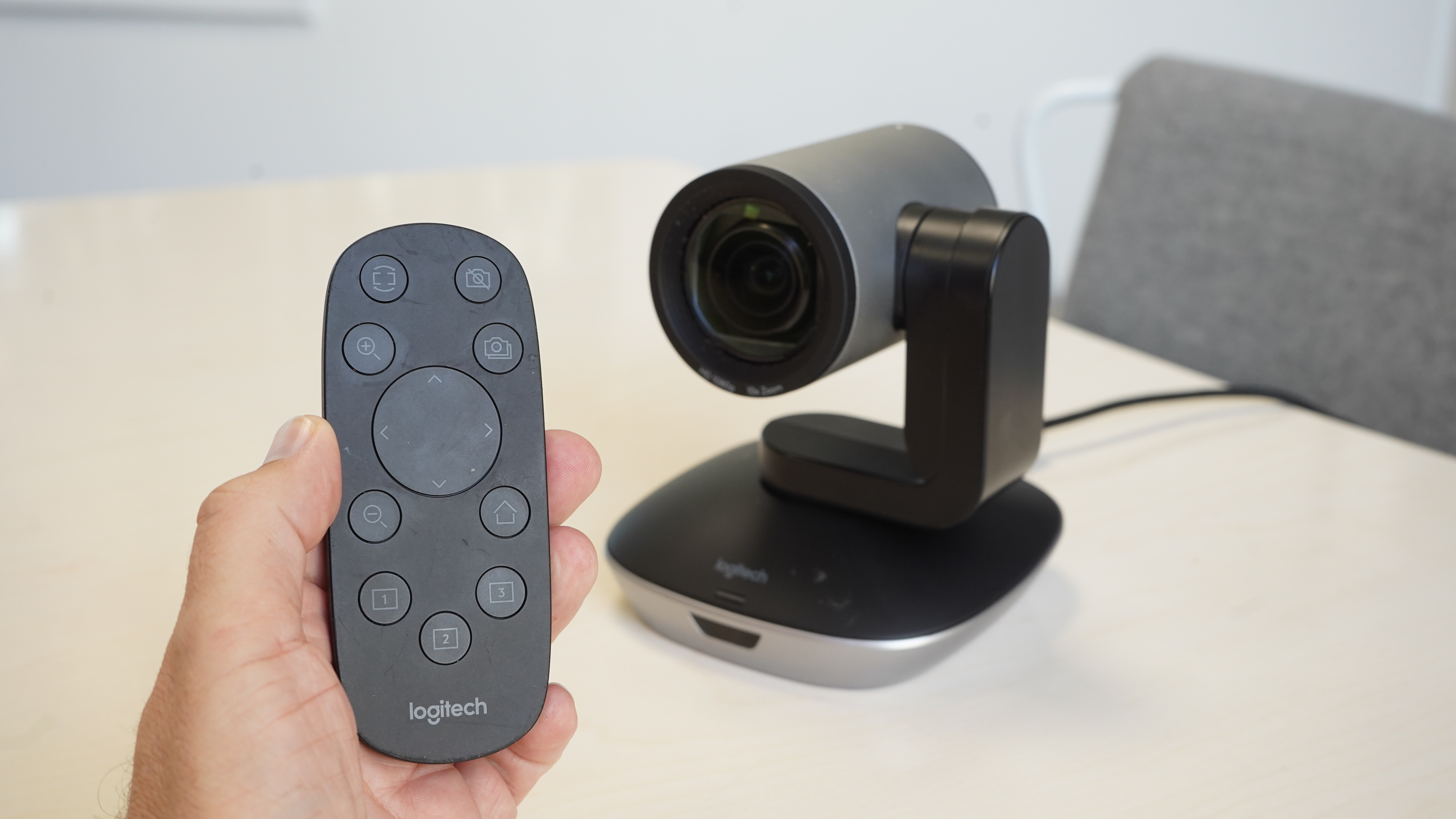
Build and handling
The Logitech PTZ Pro 2 adopts a simple and mechanically conspicuous approach to its design – no domes or other complexities are needed our used here. That seems reasonable since it's unlikely to be used in an environment where extra protection from elements is needed!
External construction is from good-quality two-tone grey plastics, the only exception being the remote.
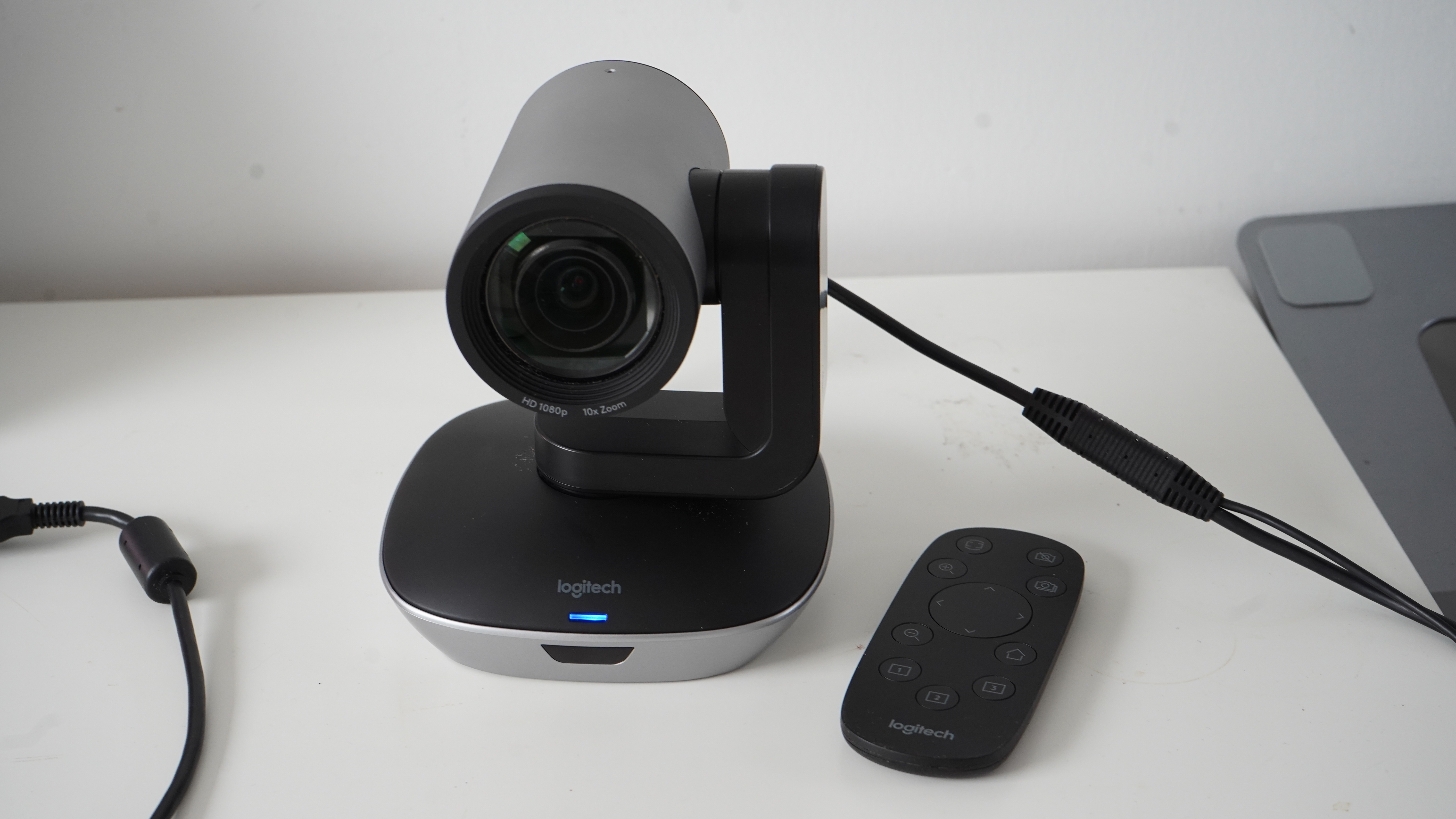
The slight exception to the hard plastic quality is the remote control, which has a slightly rubberized feeling. This mgiht well be protective – maybe absorbing a tiny amount of drop impact, or just making it harder too drop. It also has the effect of helping the remote become a magnet to slightly sticky fingers.
The other thing I didn't love about the remote is that the controls are entirely 'on/off' – there is no anaglog (soft) option, so you cannot push the center a little more gently to make the camera move less quickly. This all-or-nothing approach is good enough to line up a shot with, but means you can't really track a moving subject.
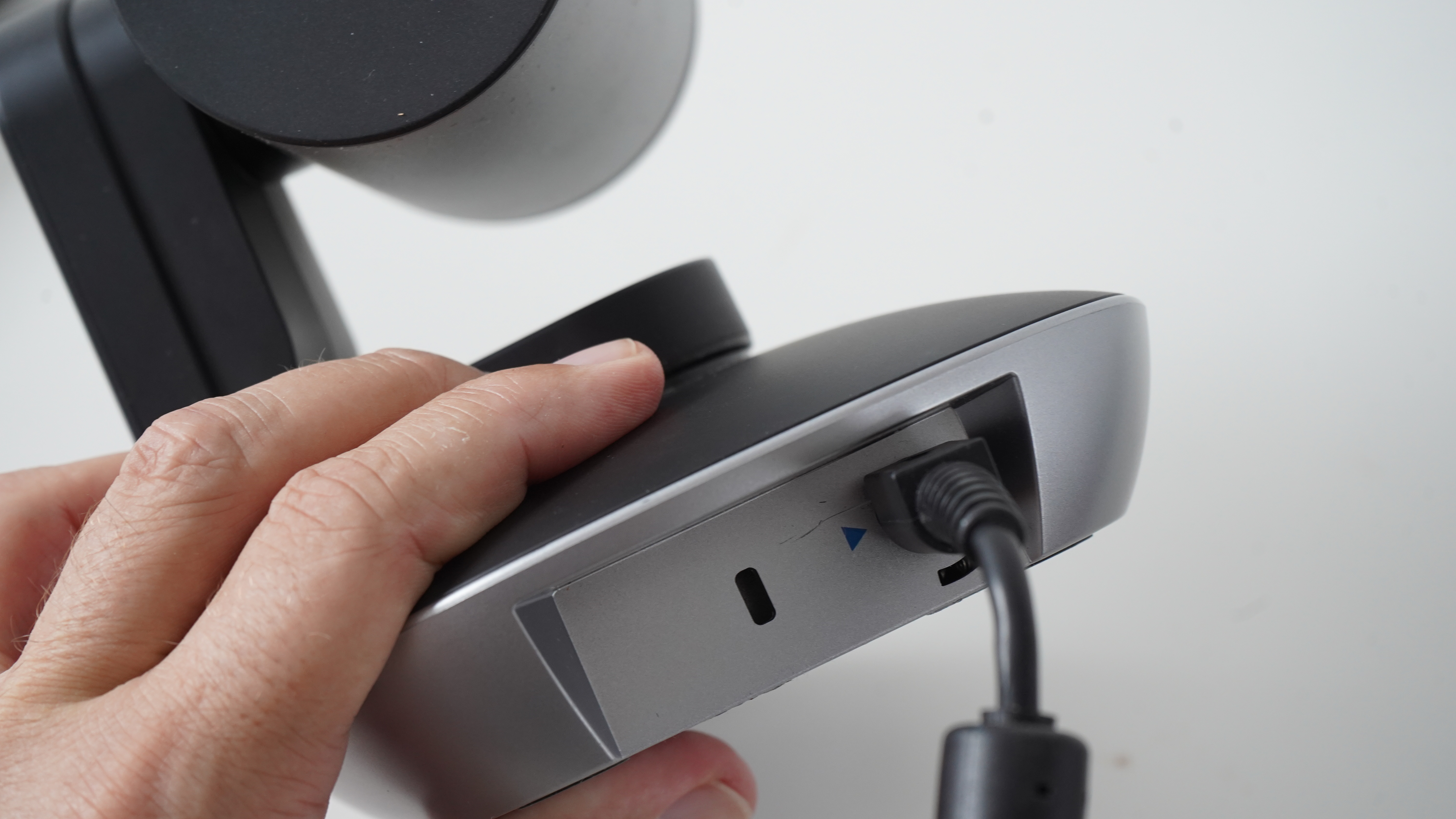
Another aspect of the device which felt a little behind the times to me in a very USB-C era was the single DIN style connector which split off into a historic USB-A connector for my computer and a power connector. I did appreciate the length and quality of the power cable though, to be fair, in a world where these things are often not good enough, but why not simply draw power from a USB-C cable? That would feel more modern.
There is a cutout for a Kensington styler security lock on the back too, but that's about it.
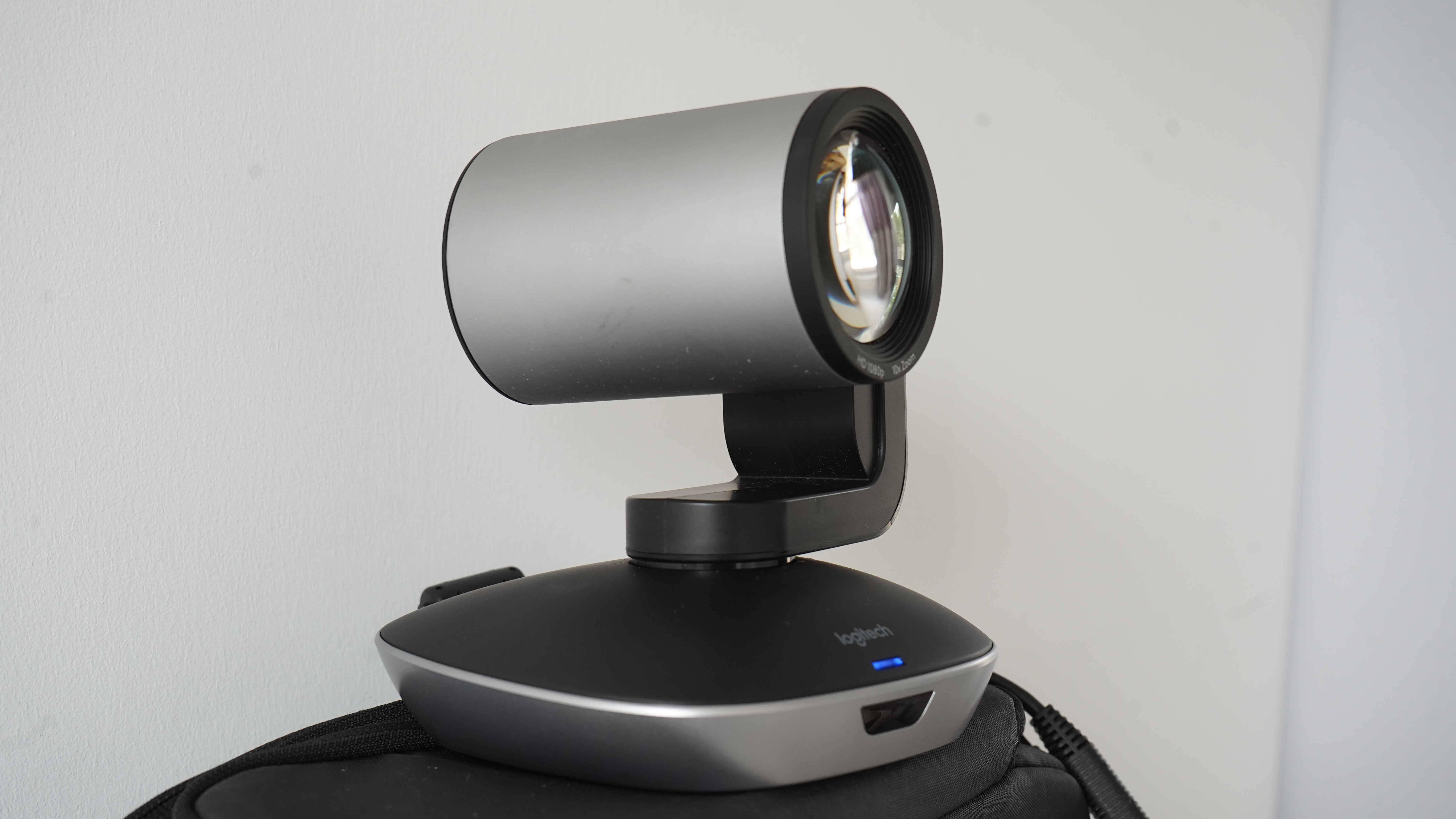
In terms of operation, the camera can be placed on a flat surface or mounted on a tripod and the arm controlled by the remote. When disconnected the power, the camera sinks back into a downward looking position and stops.
The options on the remote provide for three preset positions, a video mirror flip, and a picture mute and – beyond the PTZ controls – that's about it.
Logitech PTZ Pro 2: Performance
The camera certainly does pan, tilt and zoom within the promised range, so no complaints there. The motors are not silent, but then there is no microphone built in to pick up the sound so you should be OK depending on how you set up your system.
I did find – and you'll see in the sample video – that the camera could have been a good deal faster to focus on me. The video also seems to revert to hybrid zoom beyond 10x – meaning that you can see the blurring of digital 'guessing' rather than the optical accuracy of the detail of might somewhat untidy (or 'wolf like') beard.
I don't think that's a bad option to have, but it'd be good to be able to disable this and there is certainly no physical switch on the camera.
In general, the speed of focus – and the hunting in a fairly well-lit room (two big windows in daylight) was quite disappointing for me, though once the camera had got there the picture stayed solid and of a good quality.
Firmware updates have gone a little way to redressing the speed of performance here since launch, so make sure you install the Logitech Sync app and use it, but don't expect miracles.
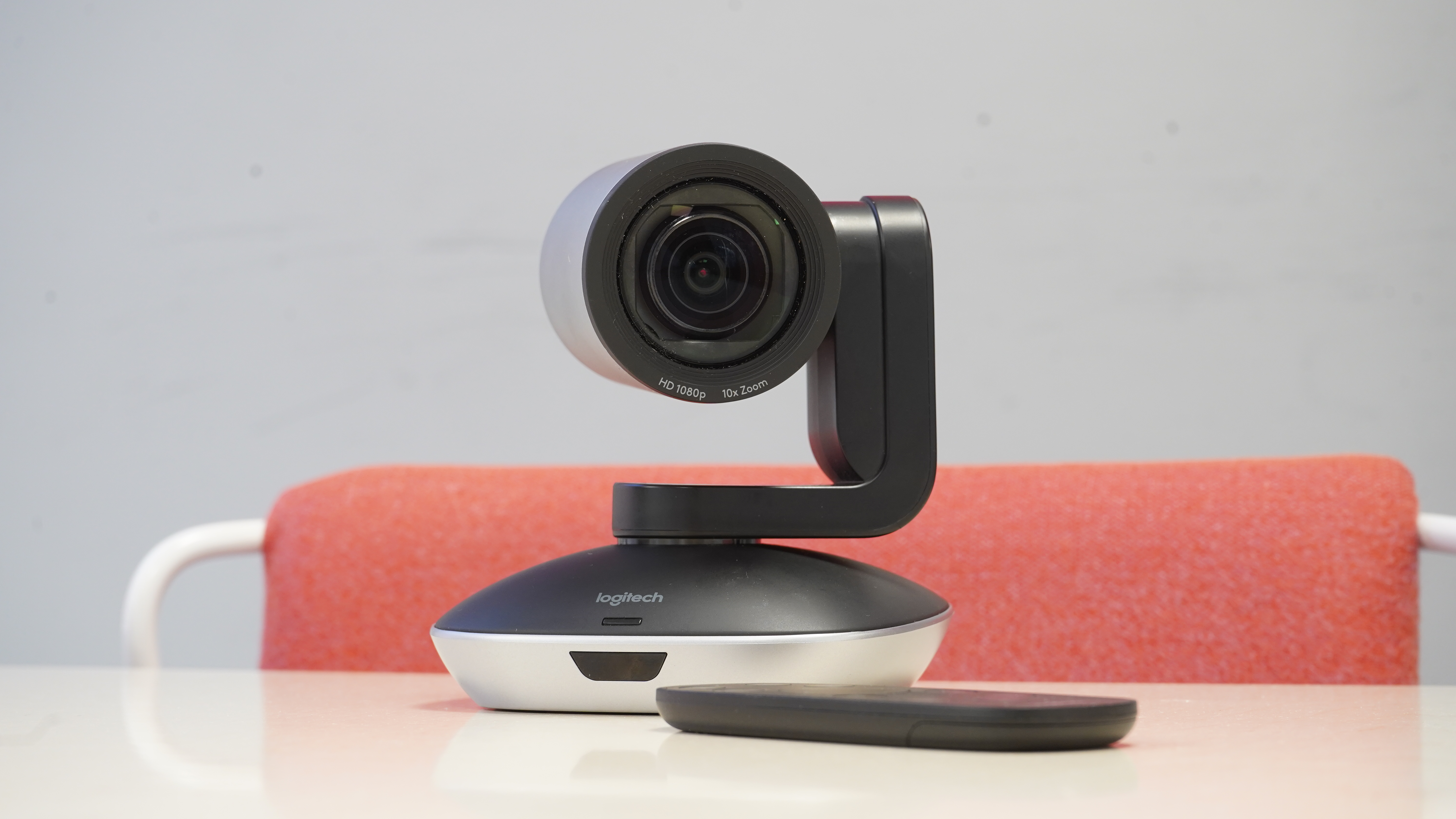
Logitech PTZ Pro 2: Overall verdict
The Logitech PTZ Pro 2 is a decent, if not brilliant, conference camera, no doubt better suited to setups where other Logitech gear is already present and can communicate with it. Conference rooms and low-movement, relatively static education events like lectures rather than dramatic live events would seem more suited to it. That's because the speed of focusing and the difficulty of directing the camera when using the infra-red (included) remote alone are problematic.
In this day and age there are more sophisticated alternative technologies to consider, which might offer more. AI subject tracking in-camera is not unheard of, so expecting it to be provided by the computer software and the computer to send UVC commands (though this is at least a common standard).
On the plus side, I think the camera provides a flattering picture when the focus is successful, adding a great deal more range. It can thus be placed to the side of a room. It can also see a whole lot further into a meeting room than, say, a fish-eye style camera.
Features |
The 10x zoom and functioning PTZ is more or less it for features; "does what it says on the box" and no more! |
Design |
I think the device itself is elegant looking, let down by a somewhat less than ideal remote control |
|
Performance *** |
While the image is good and depth of field easy on the eye when in focus, the speed of focussing and the jerky movement are a disappointment. |
Value |
Despite all my gripes, the overall price is appealing for the image quality, assumning a 1080P feed suffices. |







